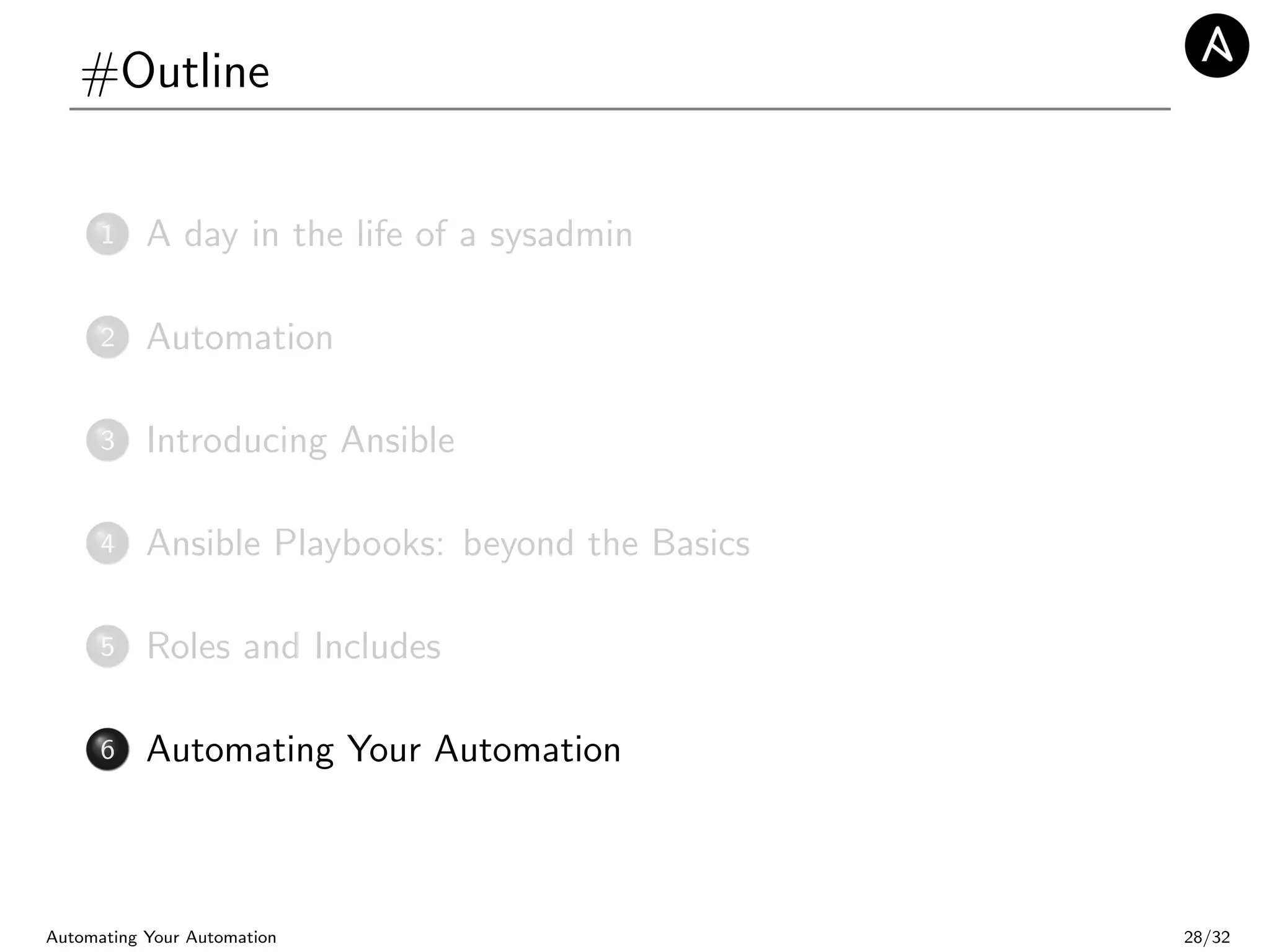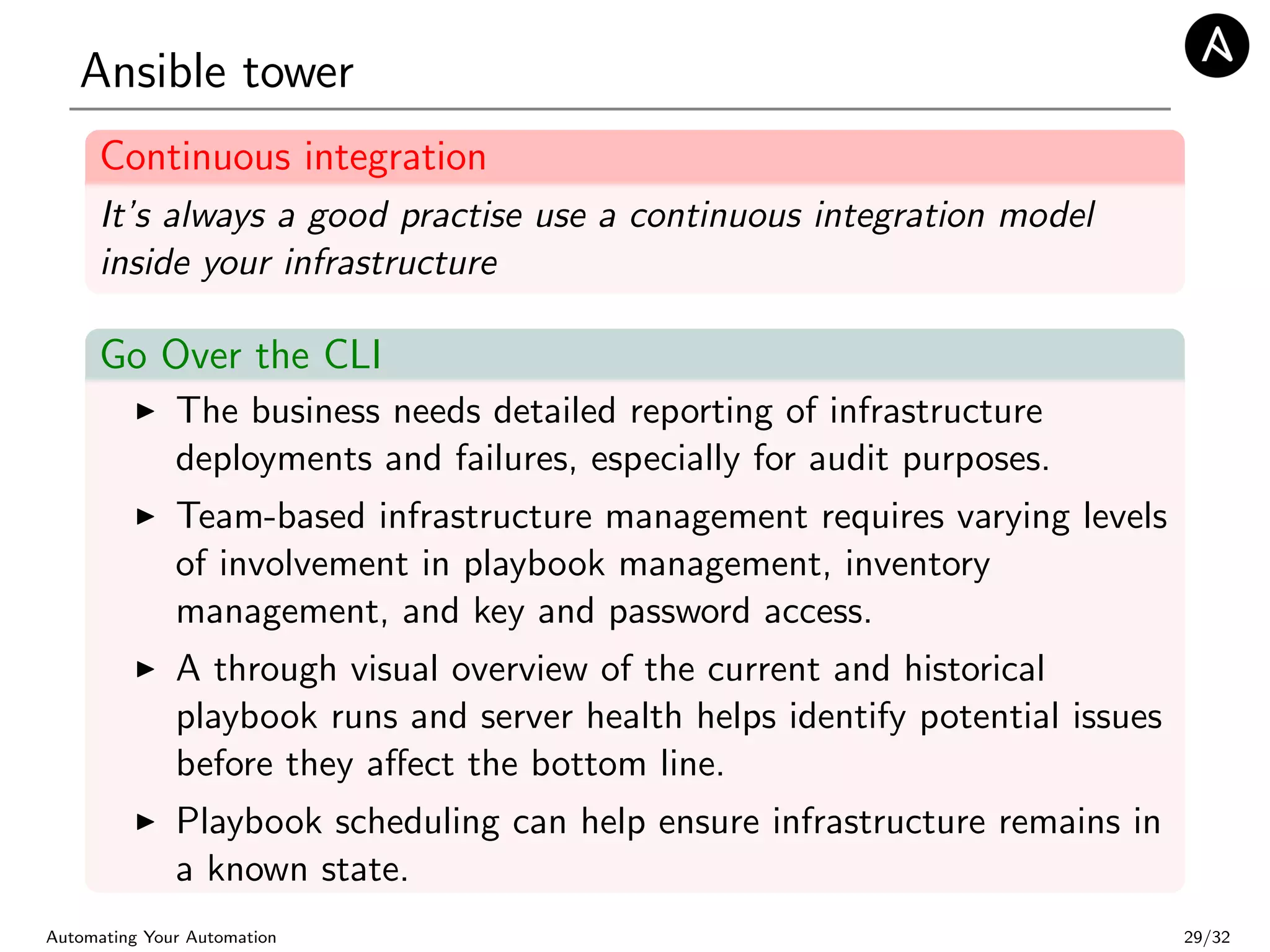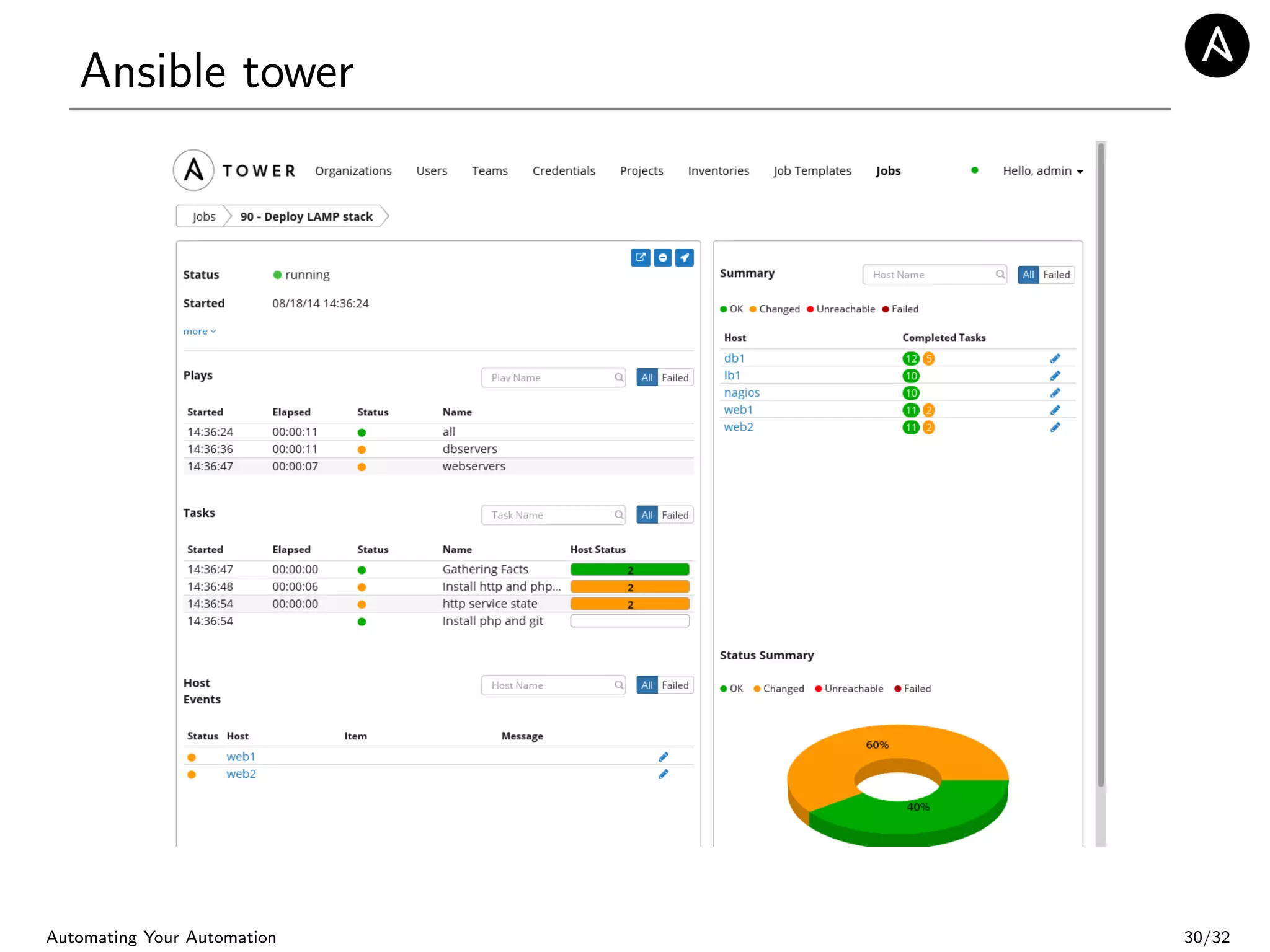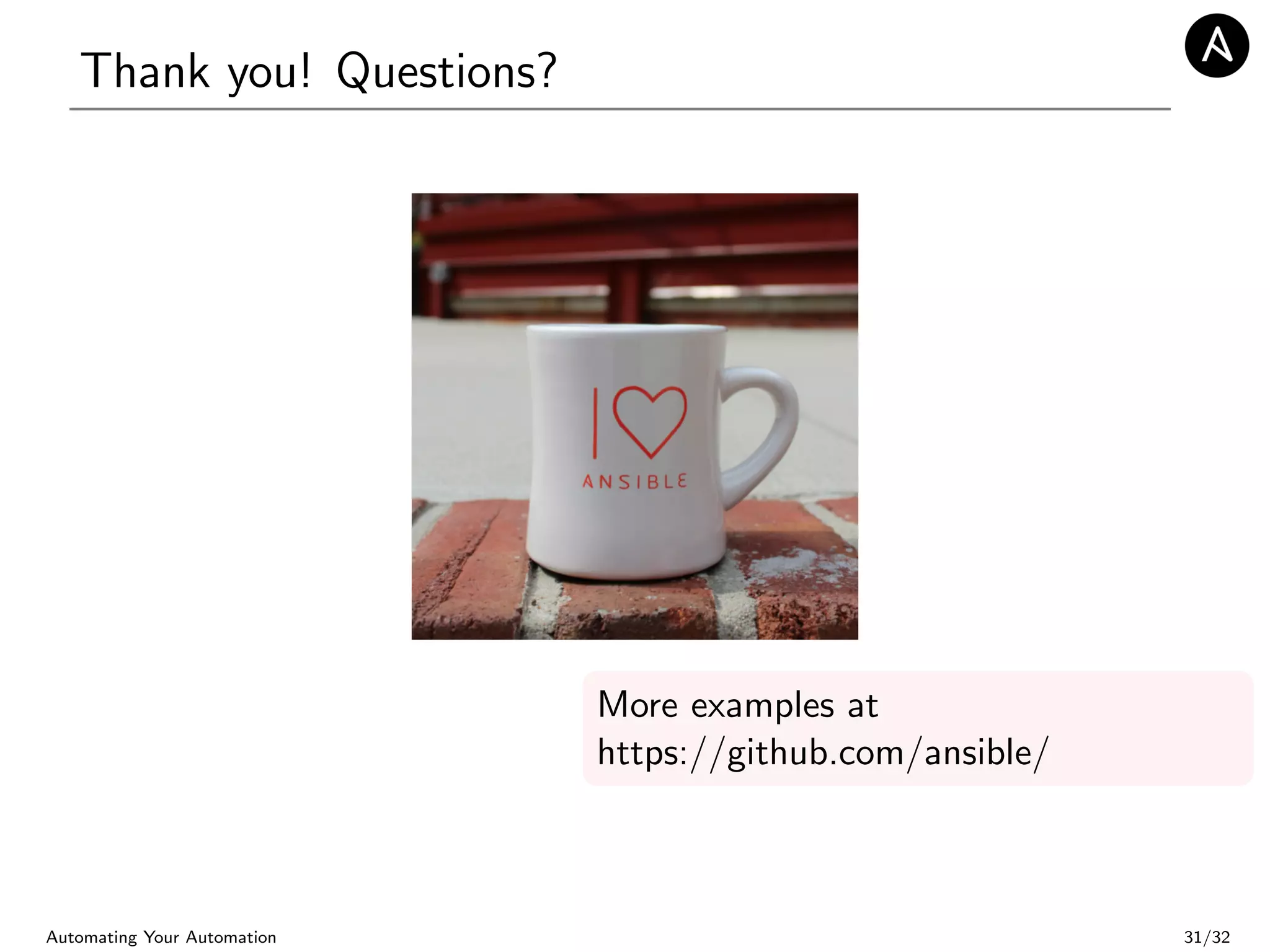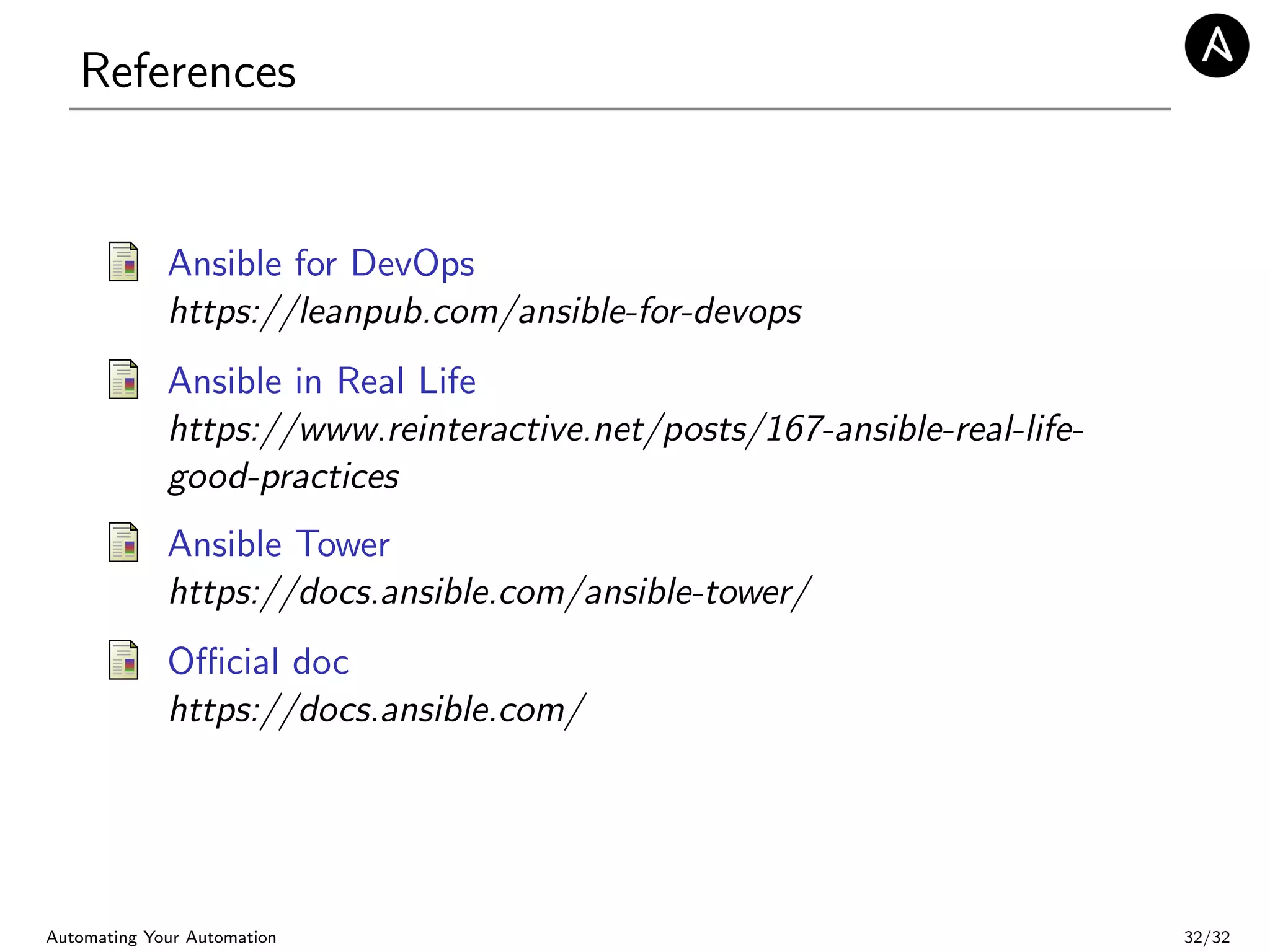The document introduces Ansible, a powerful automation tool used by sysadmins to streamline tasks such as software deployment and configuration management. It covers the practical implementation of Ansible playbooks, roles, and effective automation practices, emphasizing the importance of maintaining synchronized configurations and documentation. The content also discusses the organization of tasks and shares helpful resources for further exploration of Ansible features.

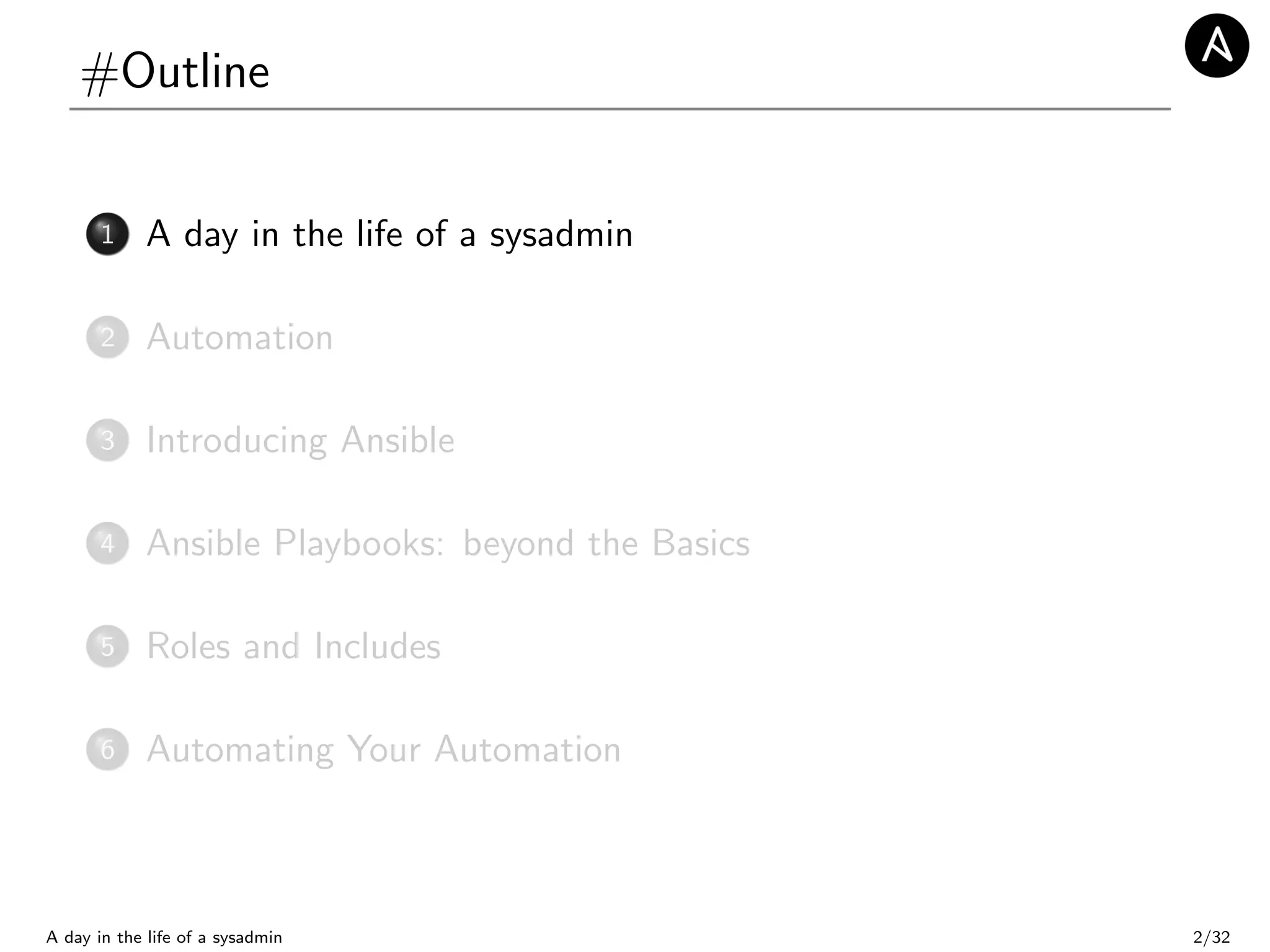

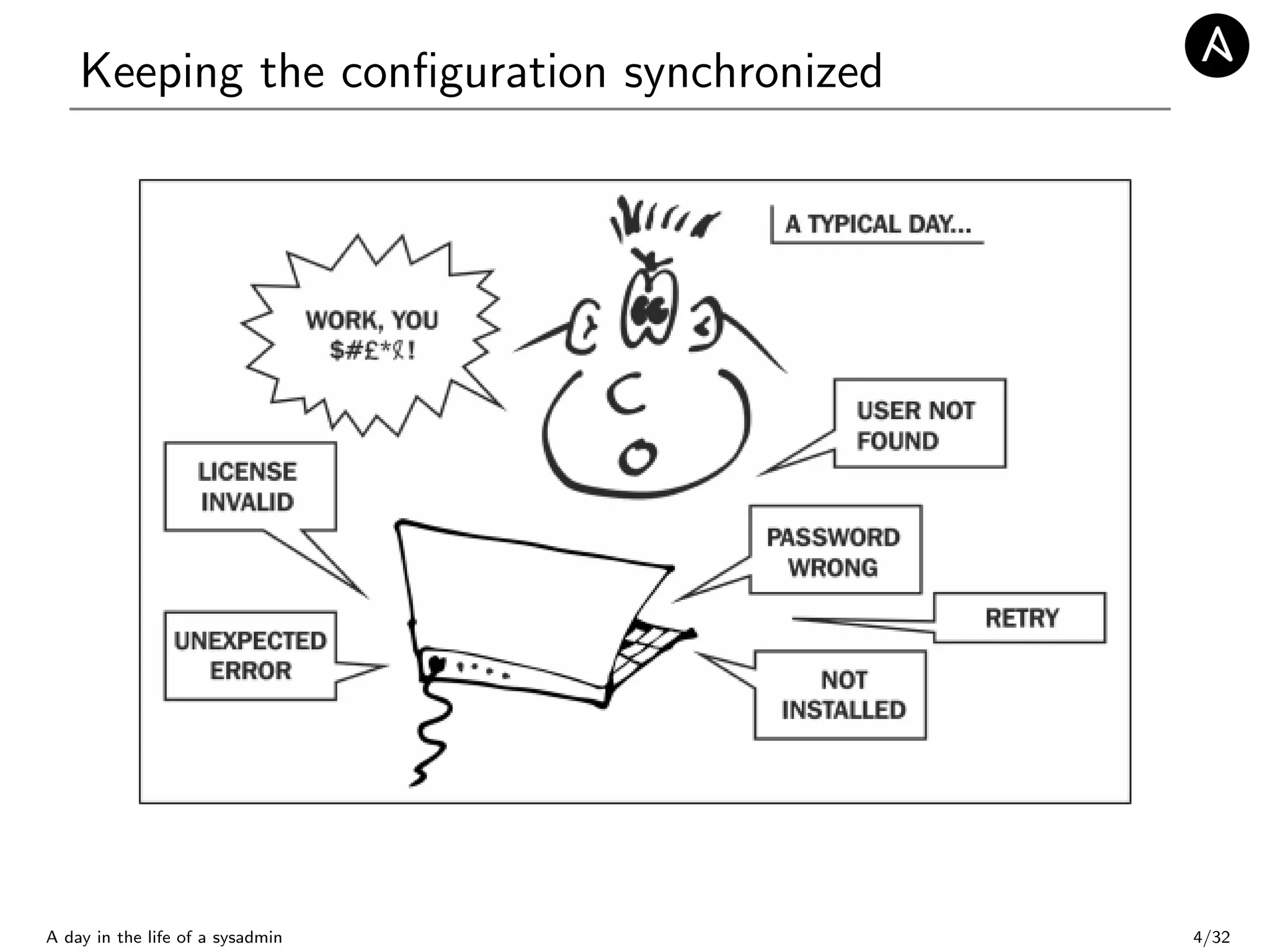
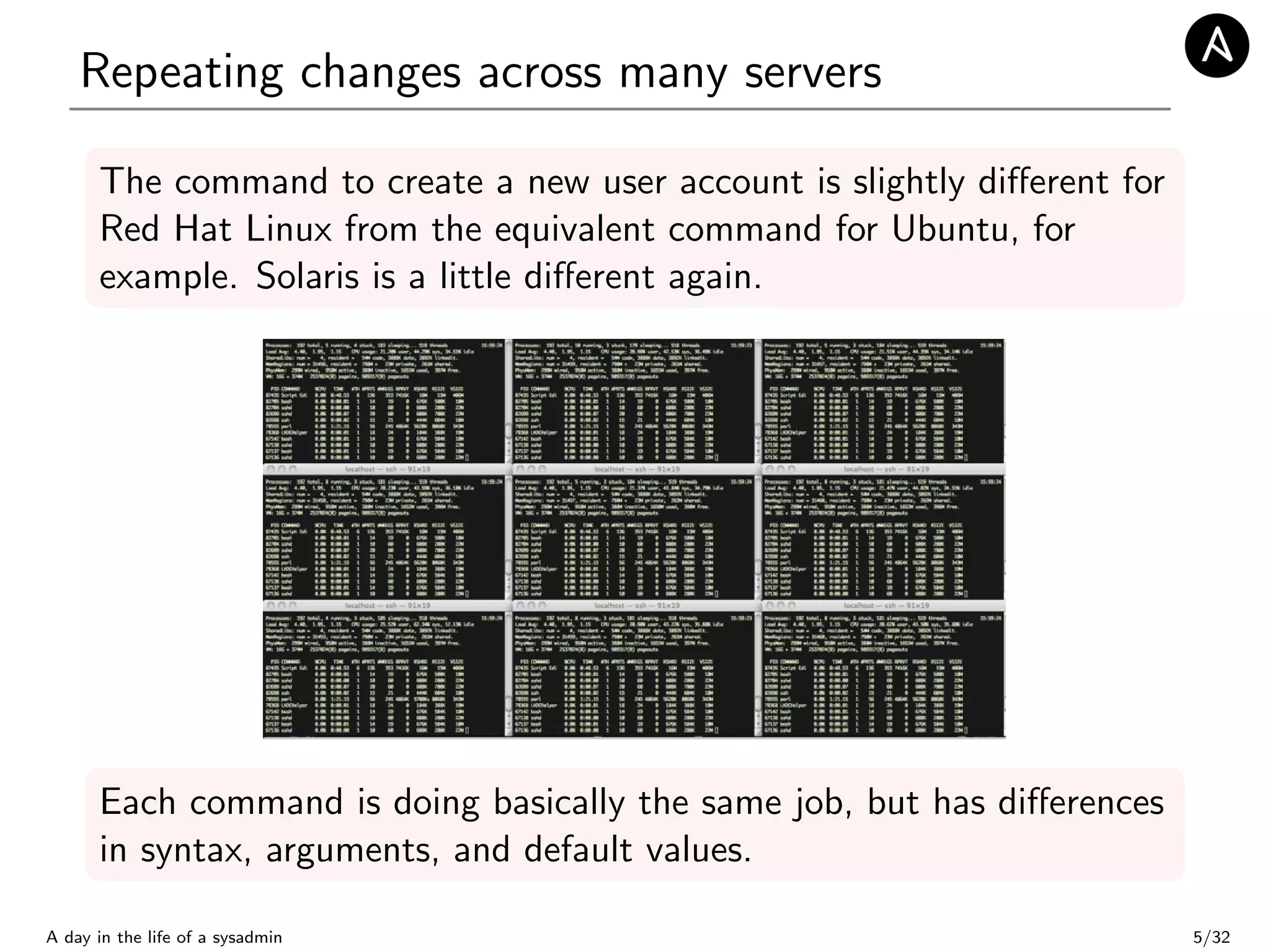
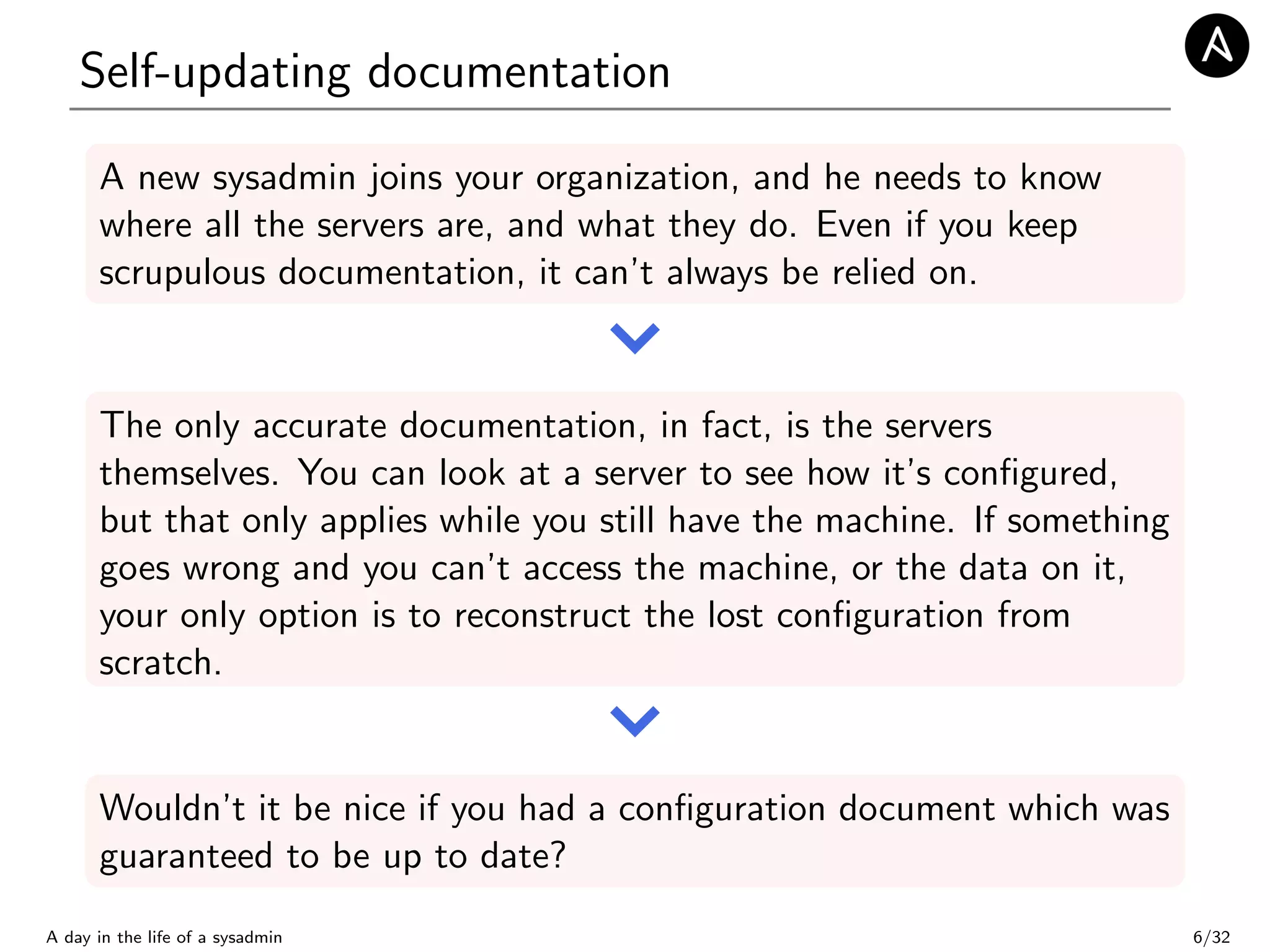
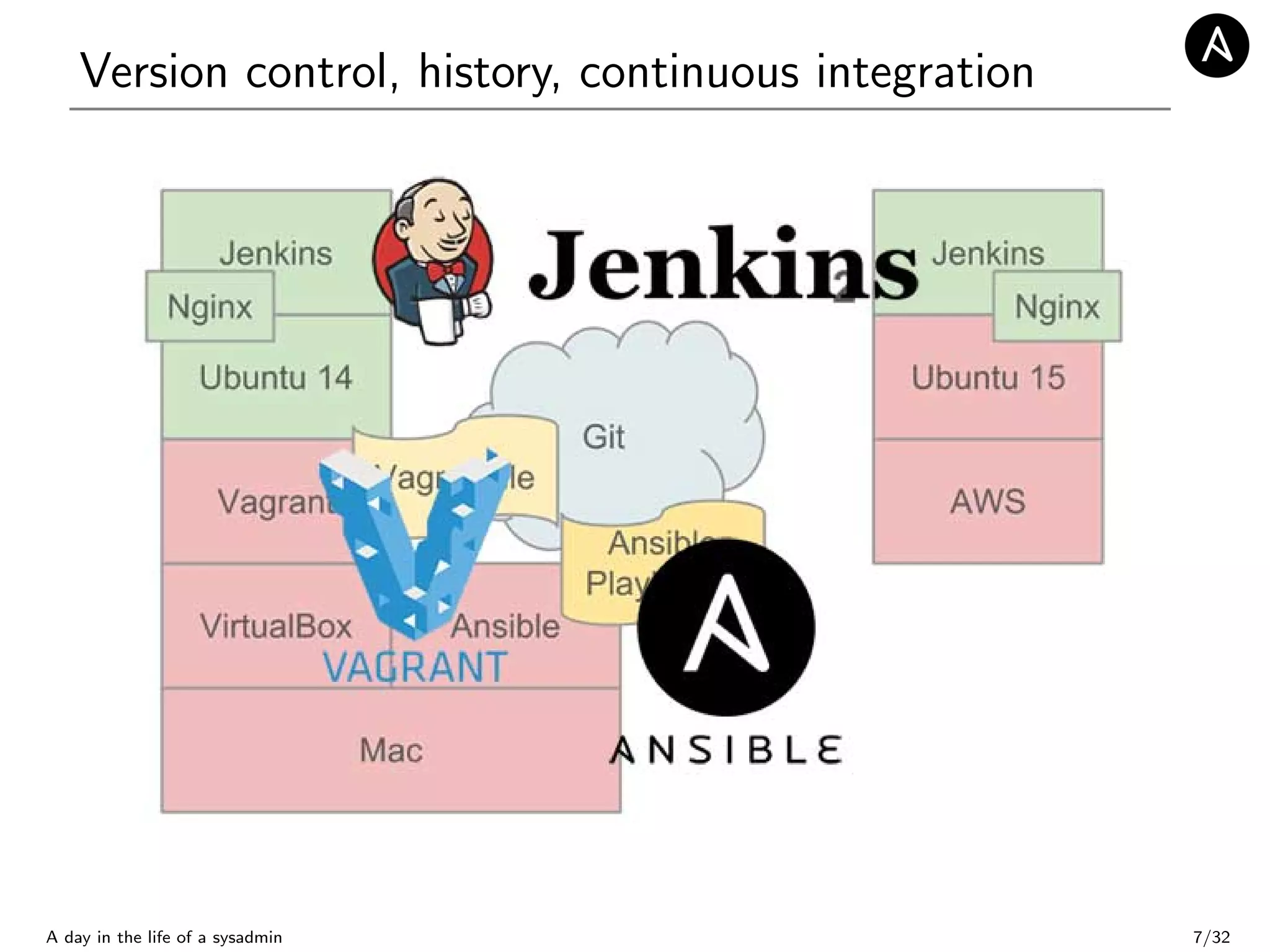

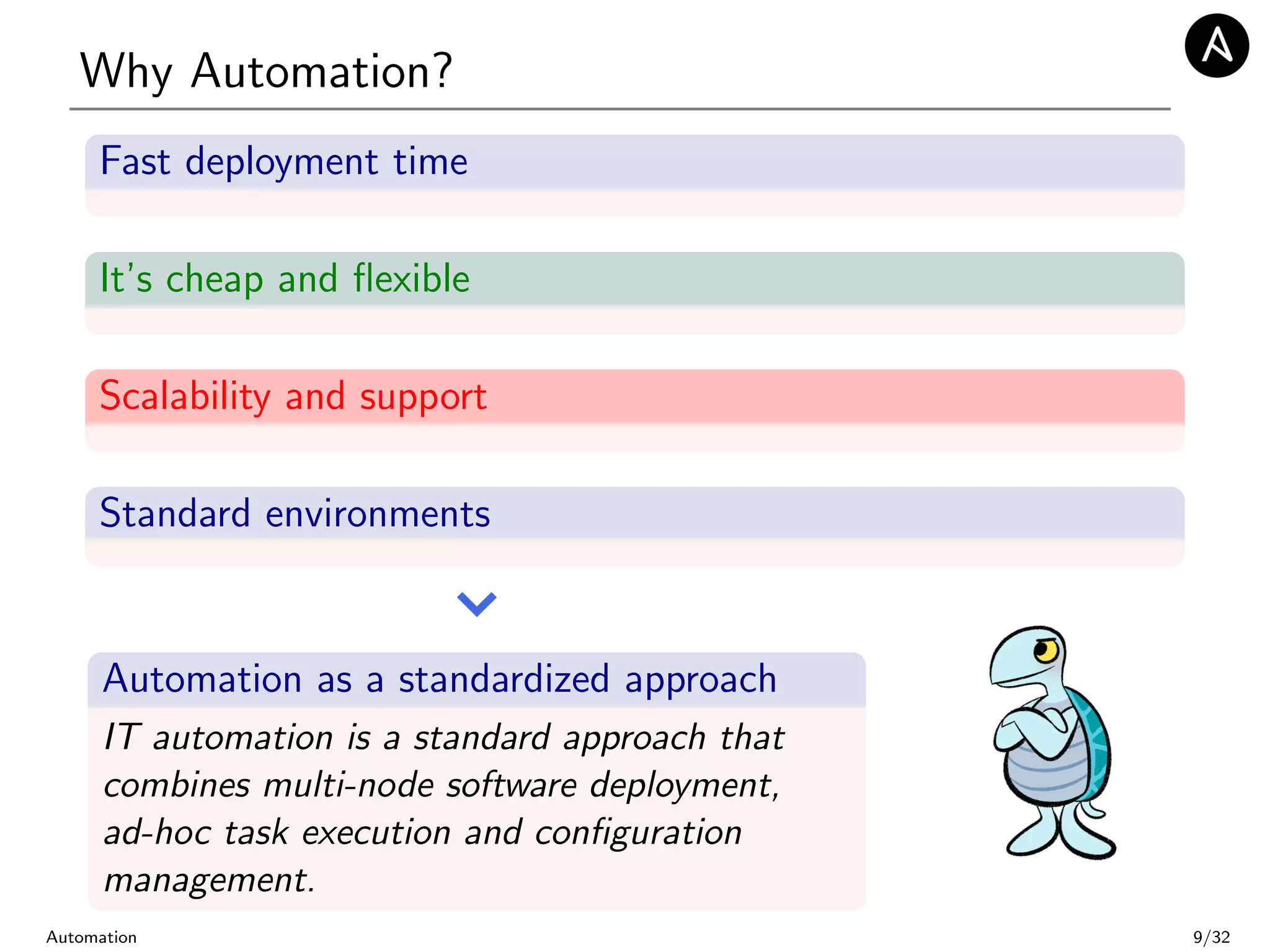
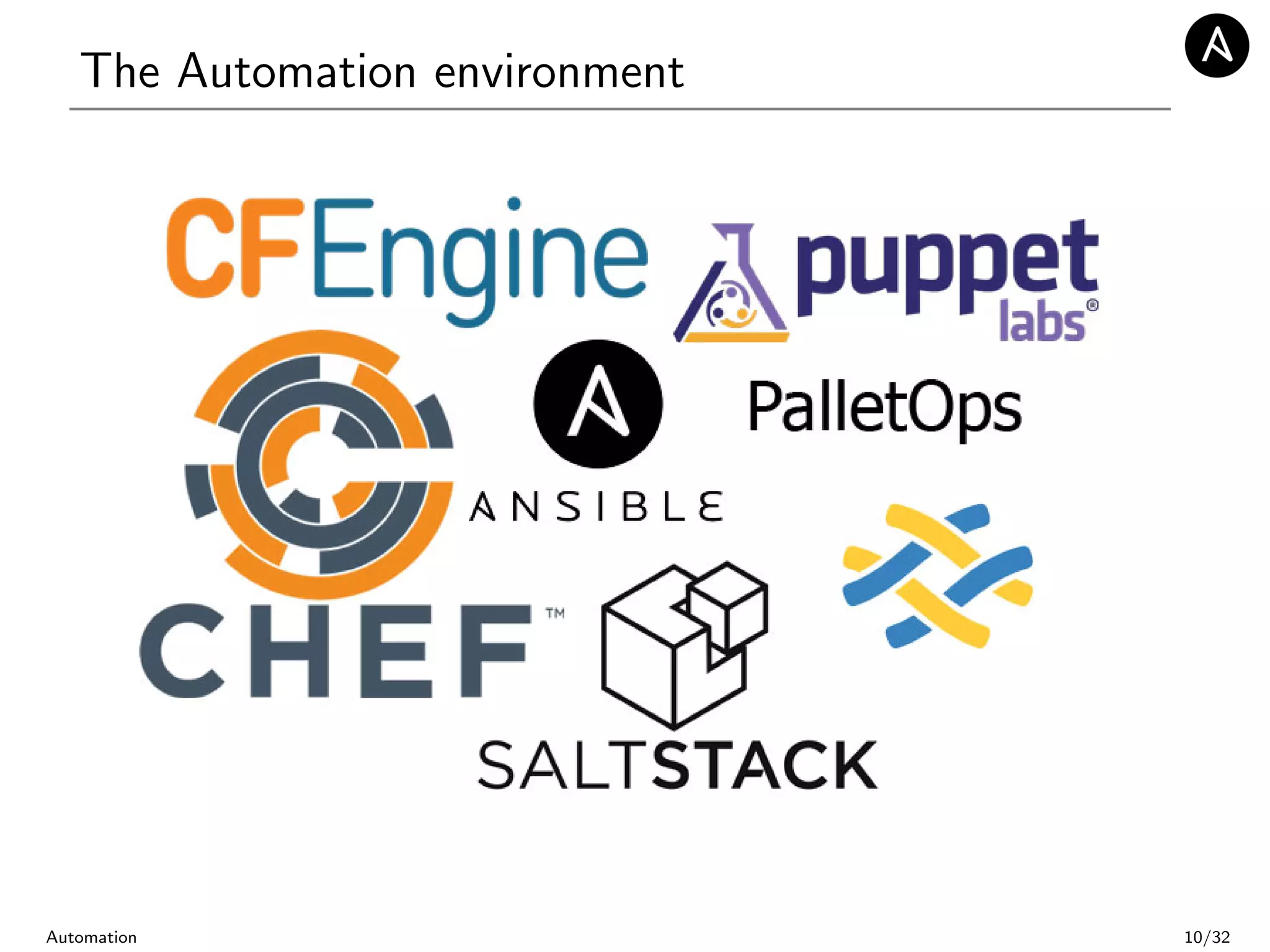
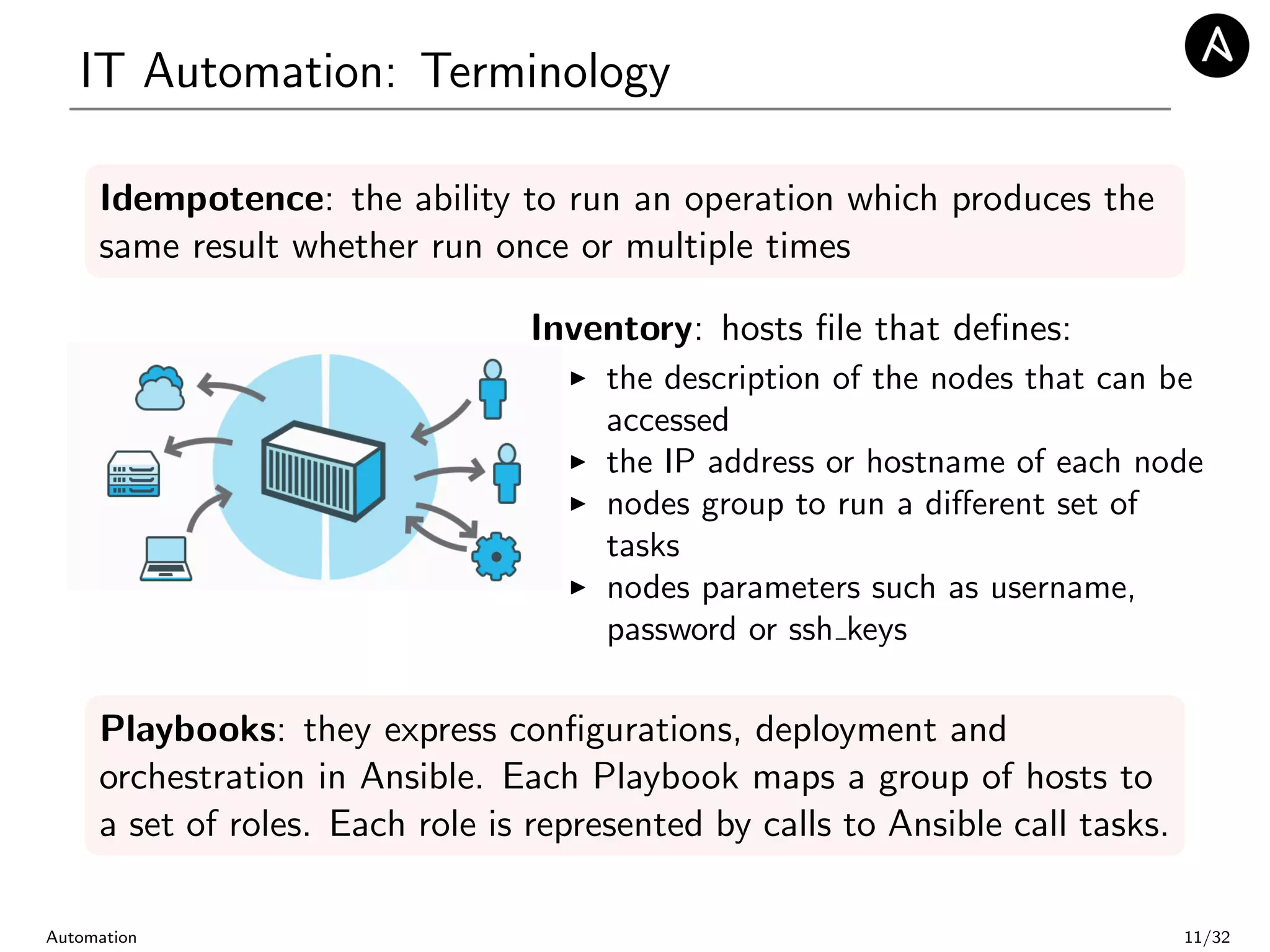
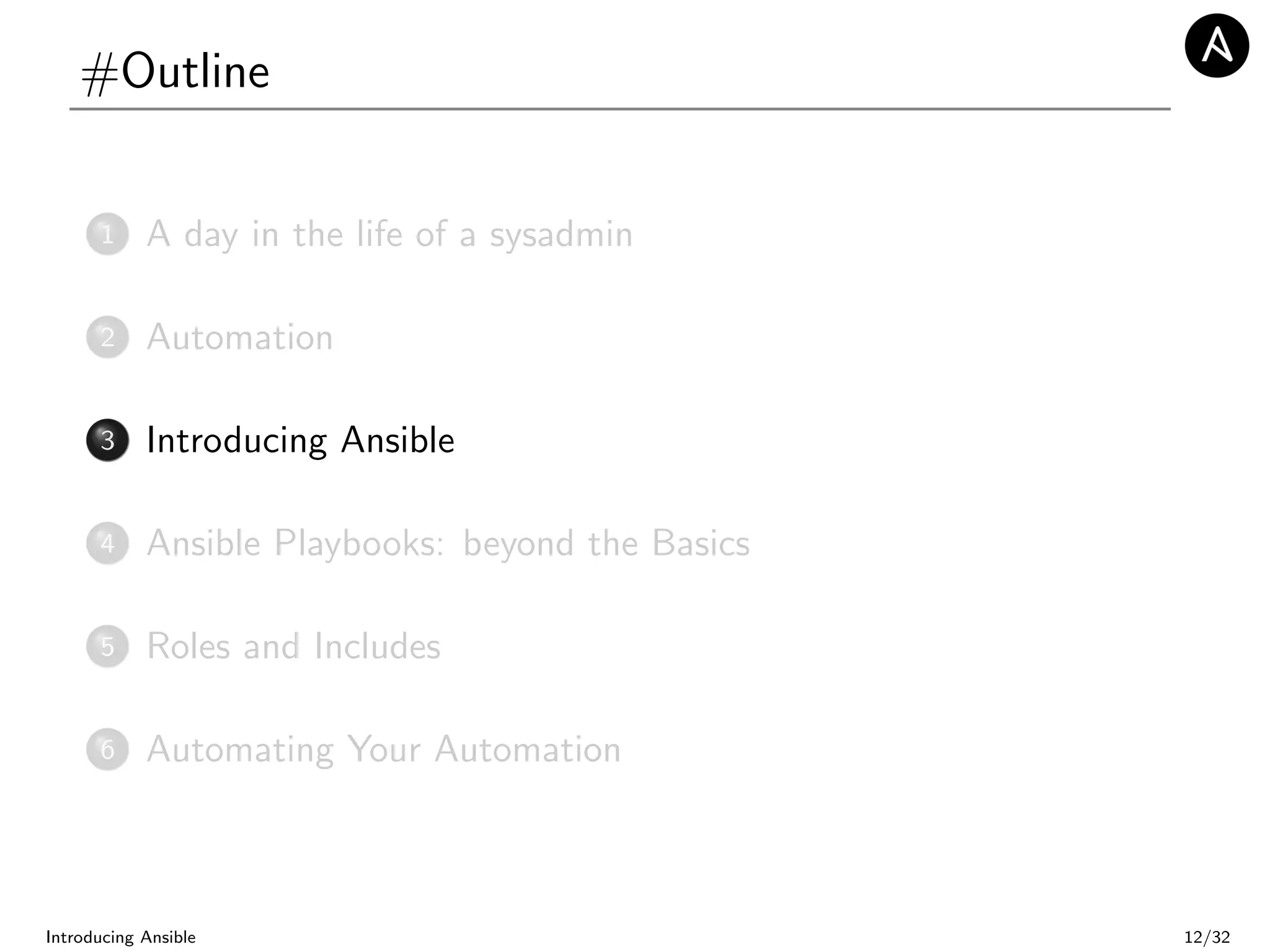
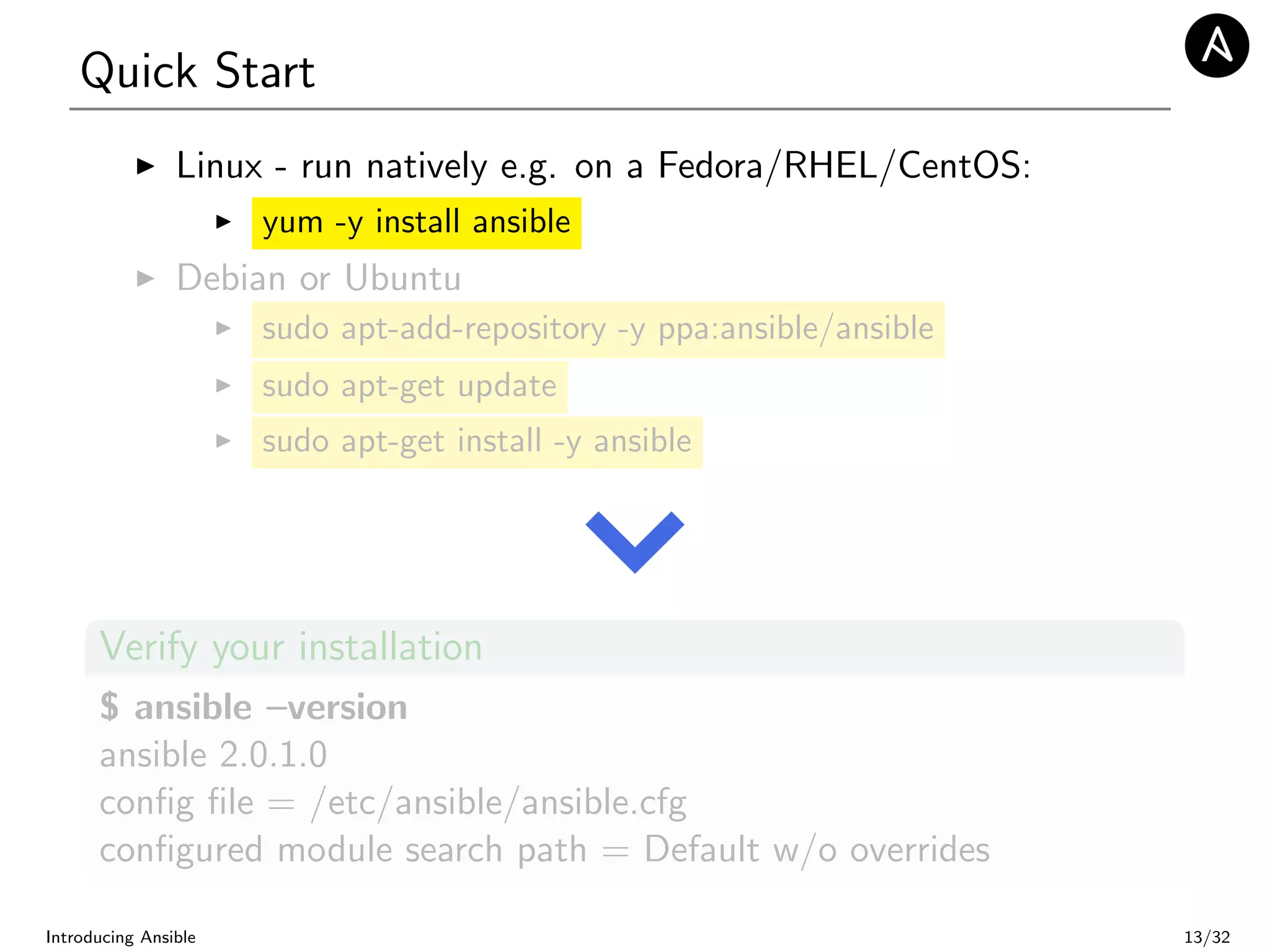
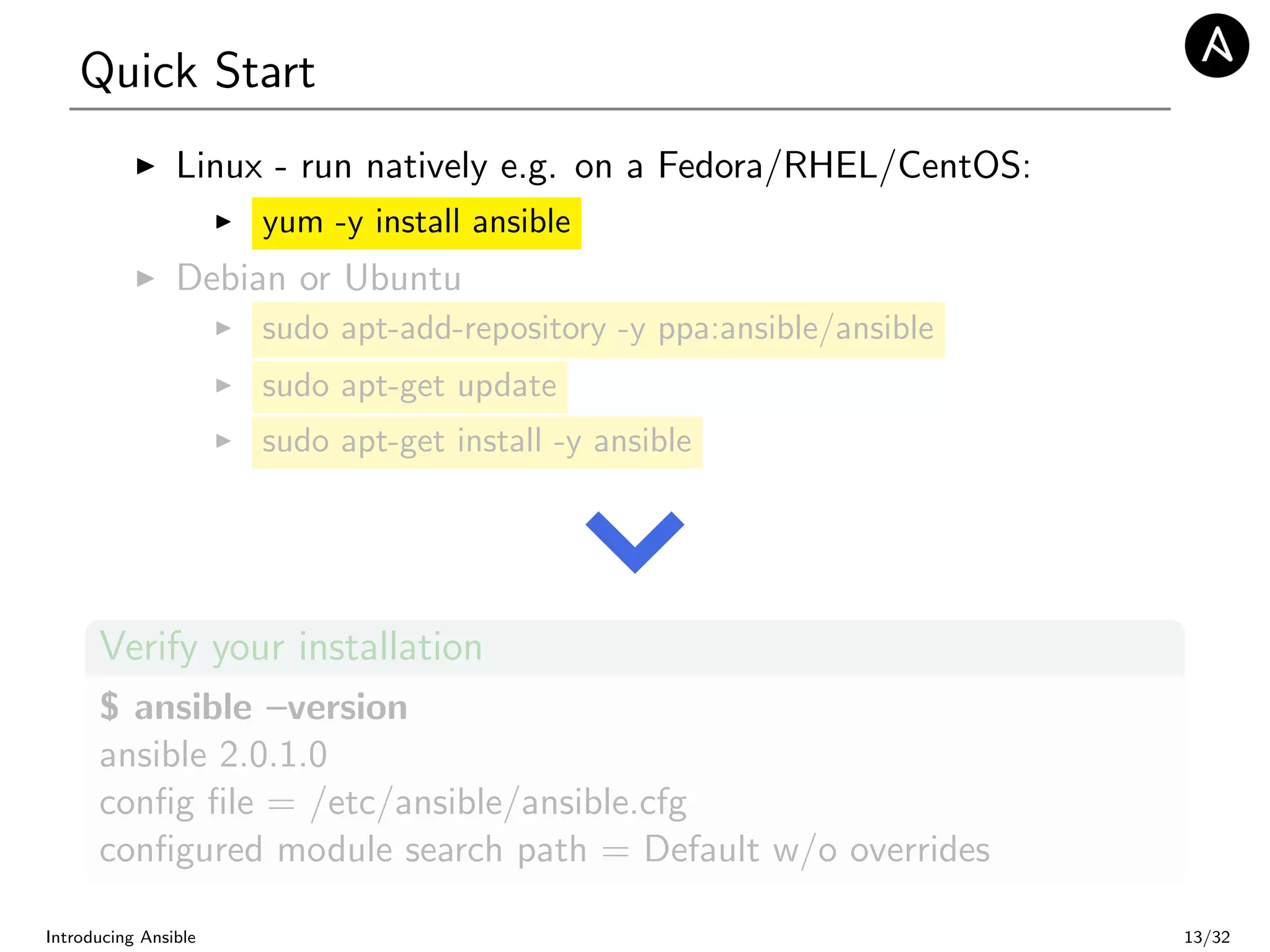
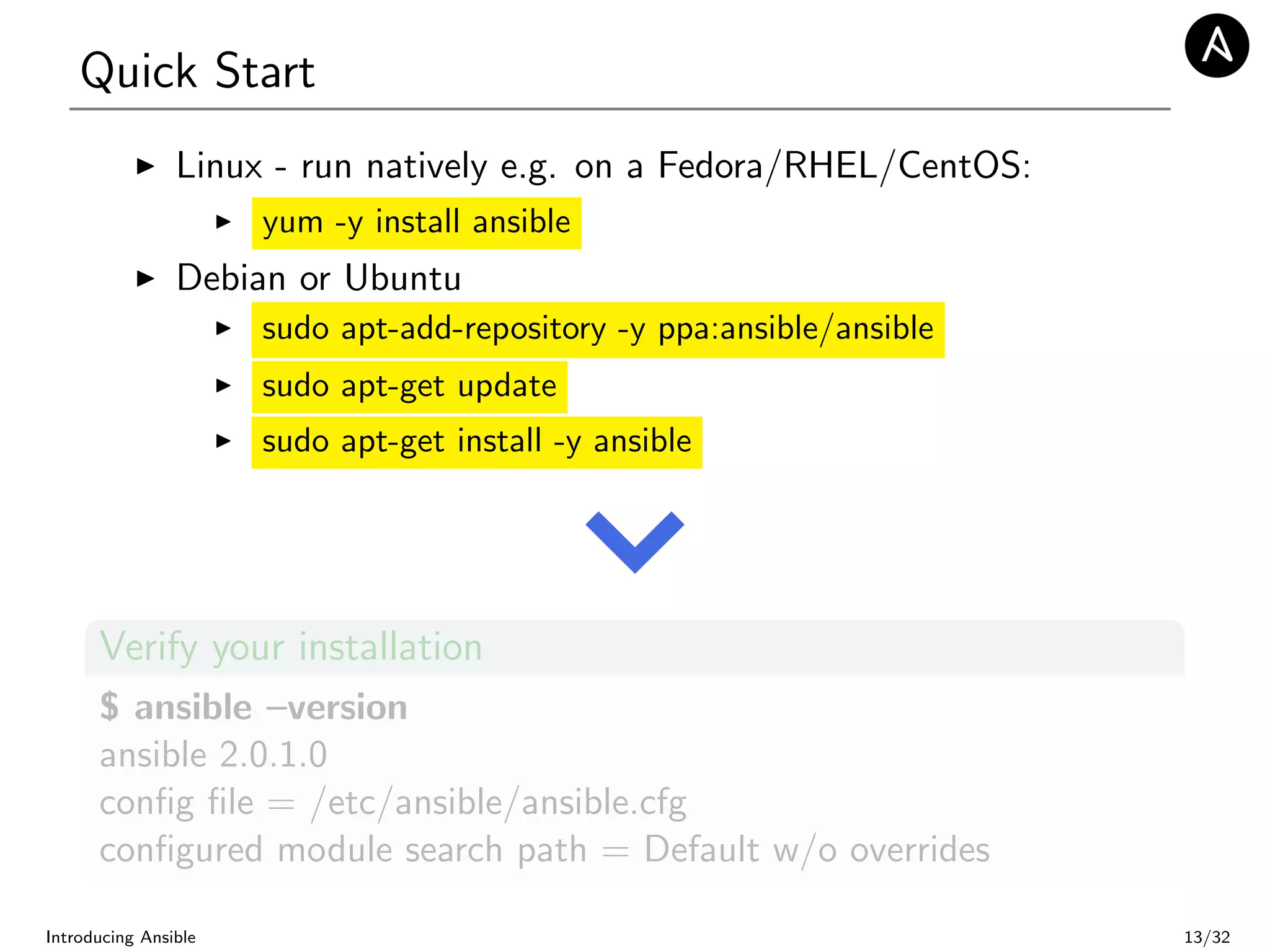
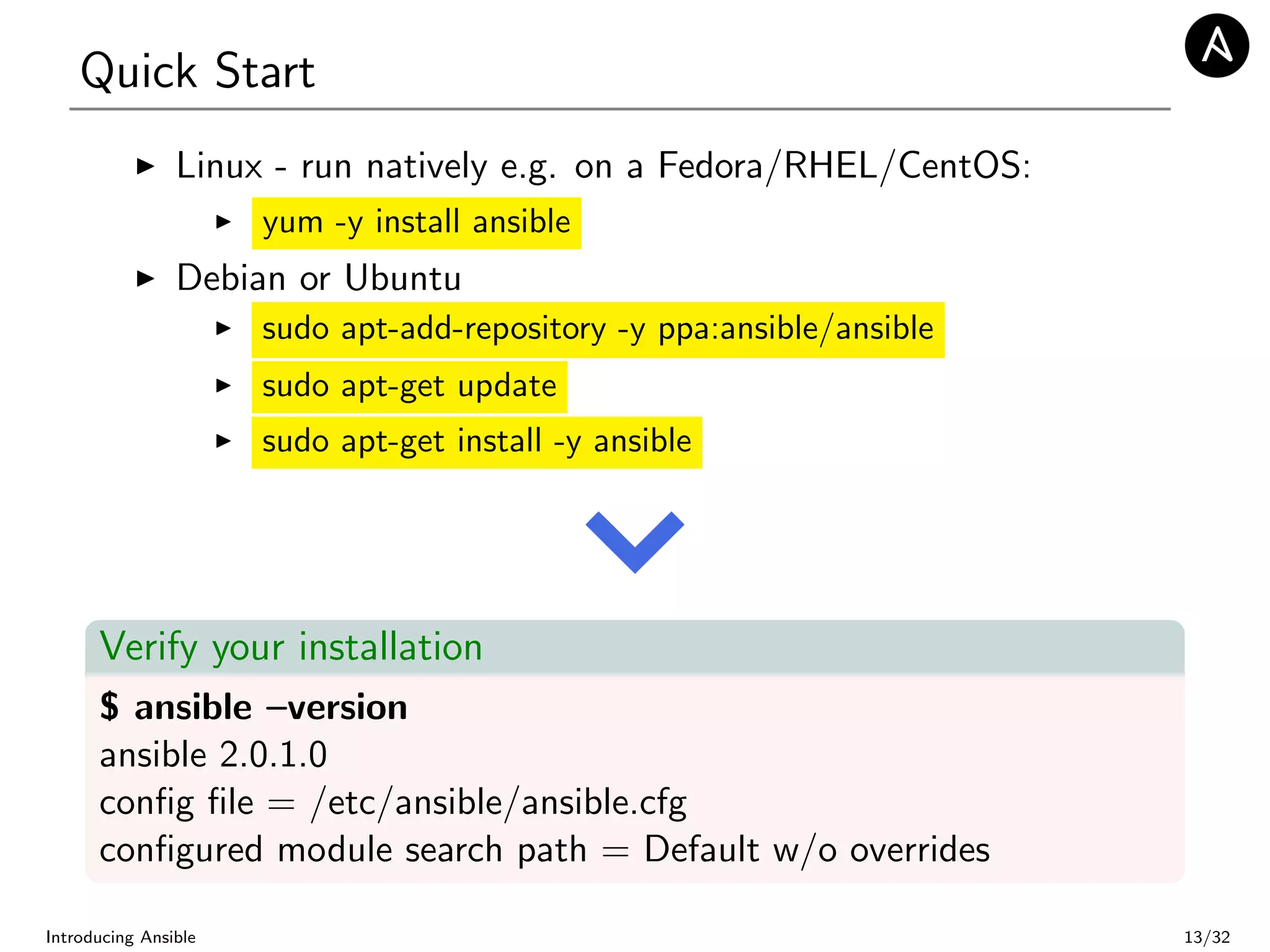
![The inventory file
Where it is located
/etc/ansible/hosts
What is the format
[mailservers]
mail.example.com
[webservers]
foo.example.com ansible ssh user = user001
bar.example.com ansible ssh private key file =
/.ssh/ansible key001
[dbservers]
one.example.com
two.example.com
db-[a:f].example.com
Introducing Ansible 14/32](https://image.slidesharecdn.com/ansibleintro-160318134617/75/Introducing-Ansible-17-2048.jpg)
![The inventory file
I can define a group of machines
# Group ’multi’ with all servers
[multi:children]
vm01
vm02
# Variables that will be applied to all servers
[multi:vars]
ansible ssh user=user001
ansible ssh private key file = /.ssh/pkey
..available parameters
https://docs.ansible.com/ansible/intro inventory.html
Introducing Ansible 15/32](https://image.slidesharecdn.com/ansibleintro-160318134617/75/Introducing-Ansible-18-2048.jpg)
![The Ansible command line
ansible-playbook
Execute a playbook
ansible-galaxy
Roles management
ansible example -a ”free -m” -u [username]
Run the free command on the example domain
ansible example -m ping -u [username]
Run the ping command on the example domain
ansible atlanta -m copy -a ”src=/etc/hosts
dest=/tmp/hosts”
File copy using the copy module
ansible all -m user -a ”name=foo password=’crypted
password here’”
User and group management
Introducing Ansible 16/32](https://image.slidesharecdn.com/ansibleintro-160318134617/75/Introducing-Ansible-19-2048.jpg)
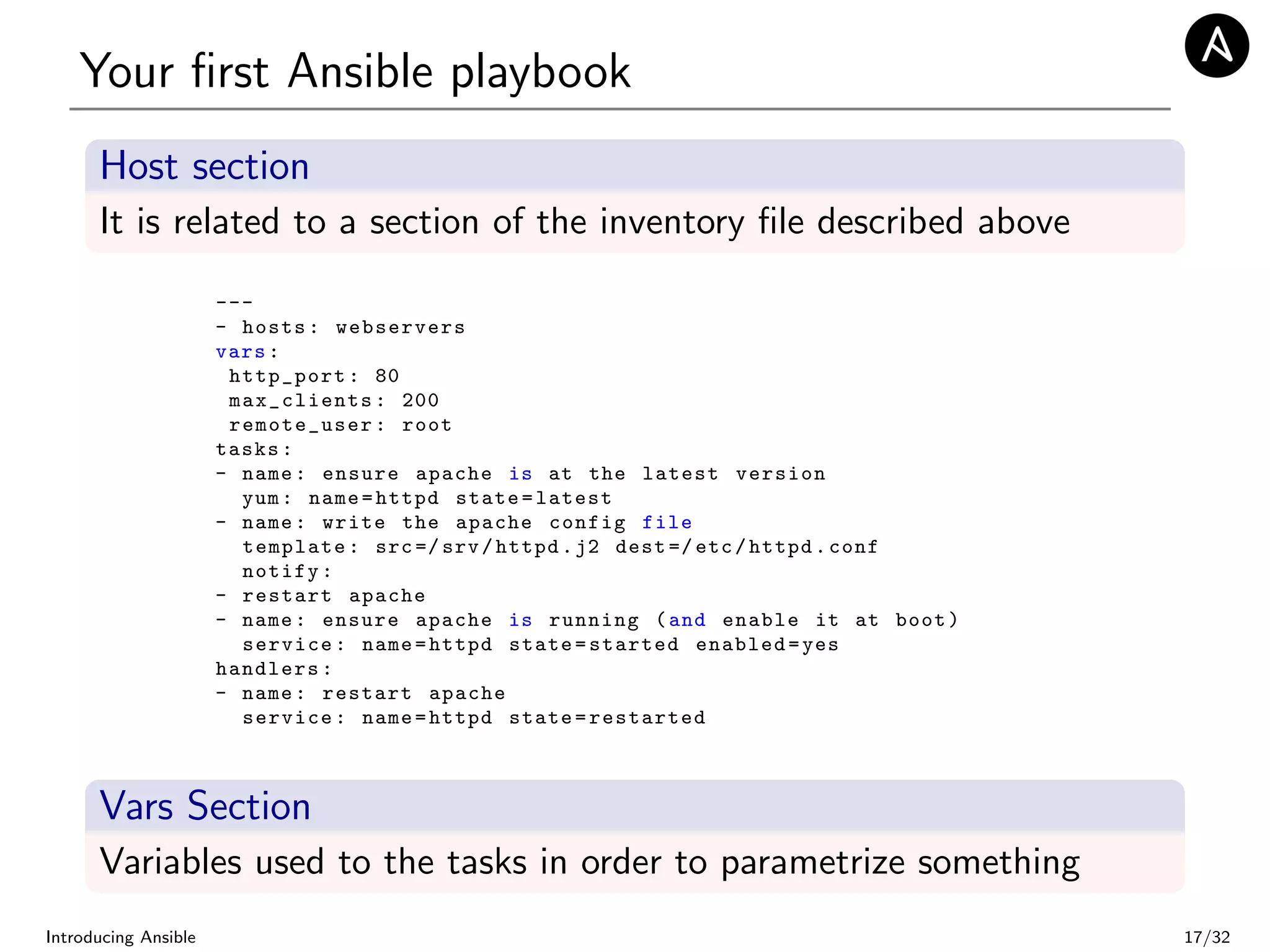
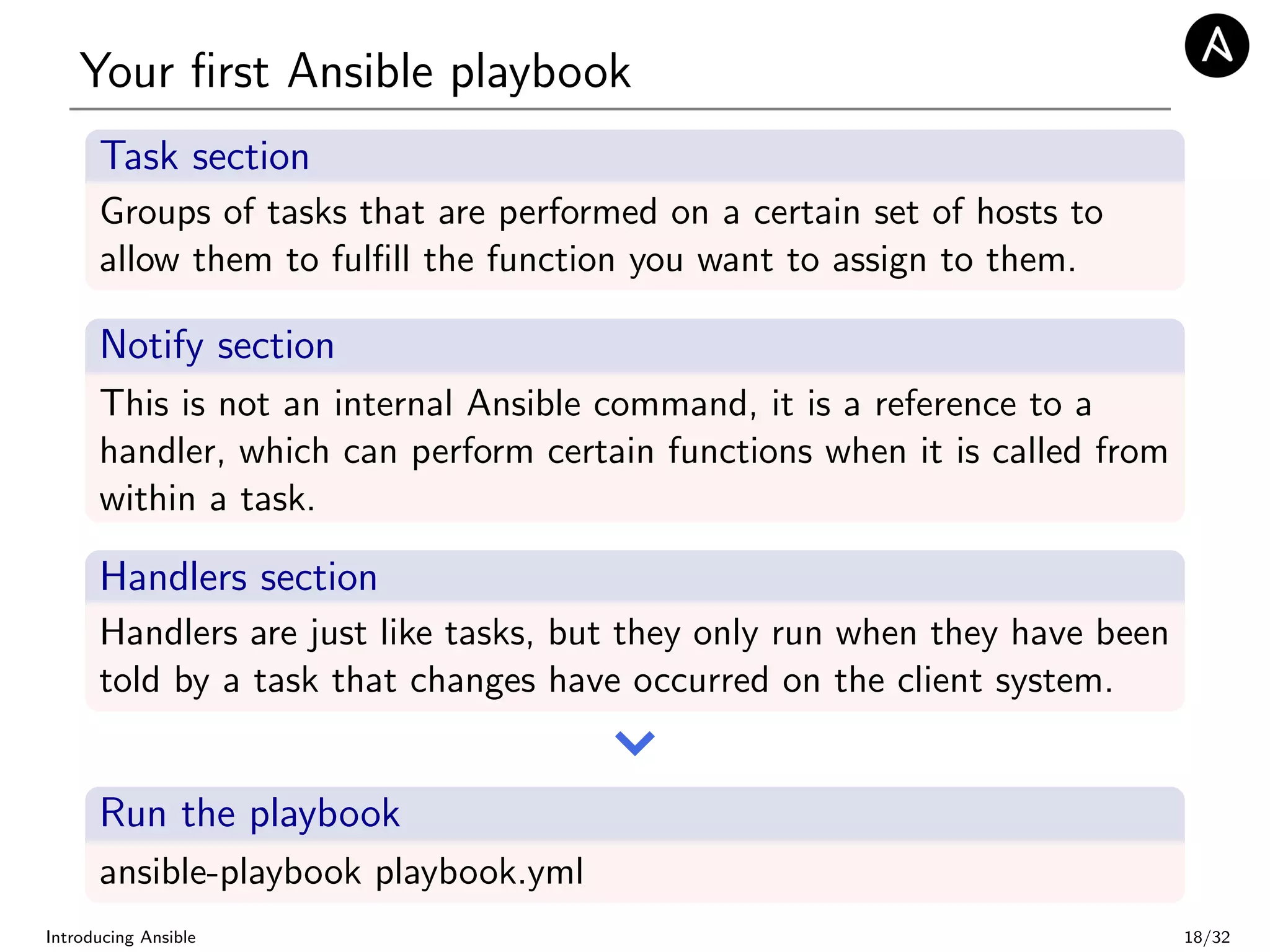
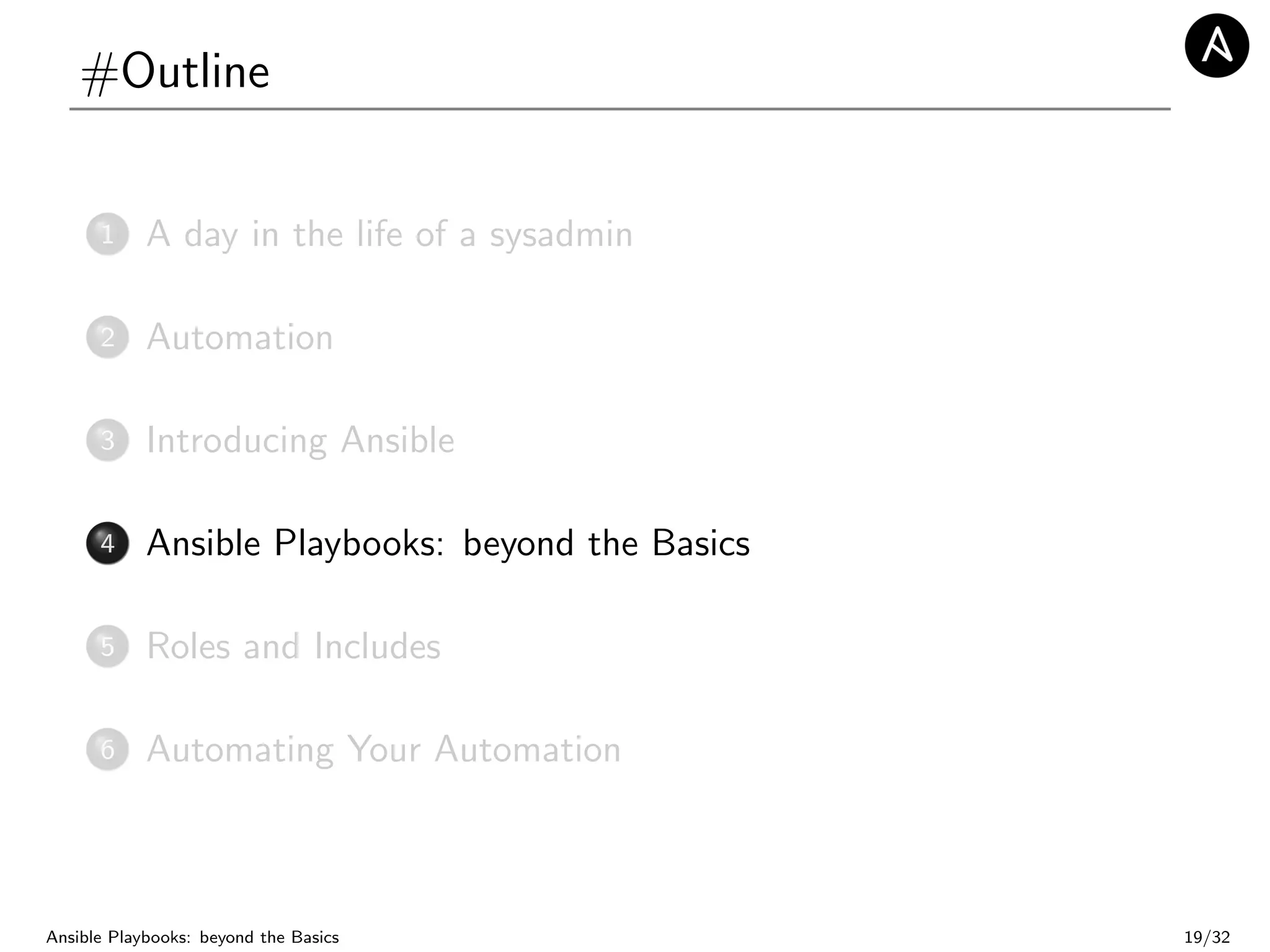
![Playing with variables
---
- hosts: example
vars:
foo: bar
tasks:
# Prints "Variable ’foo’ is set to bar".
- debug: msg="’foo’ is set to {{ foo }}"
Variables always begin with a letter ([A-Za-z]), and can include
any number of underscores ( ) or numbers ([0-9]).
Variables can be passed in via the command line, when calling
ansible-playbook, with the –extra-vars option:
ansible-playbook example.yml –extra-vars ”foo=bar”
Ansible Playbooks: beyond the Basics 20/32](https://image.slidesharecdn.com/ansibleintro-160318134617/75/Introducing-Ansible-23-2048.jpg)
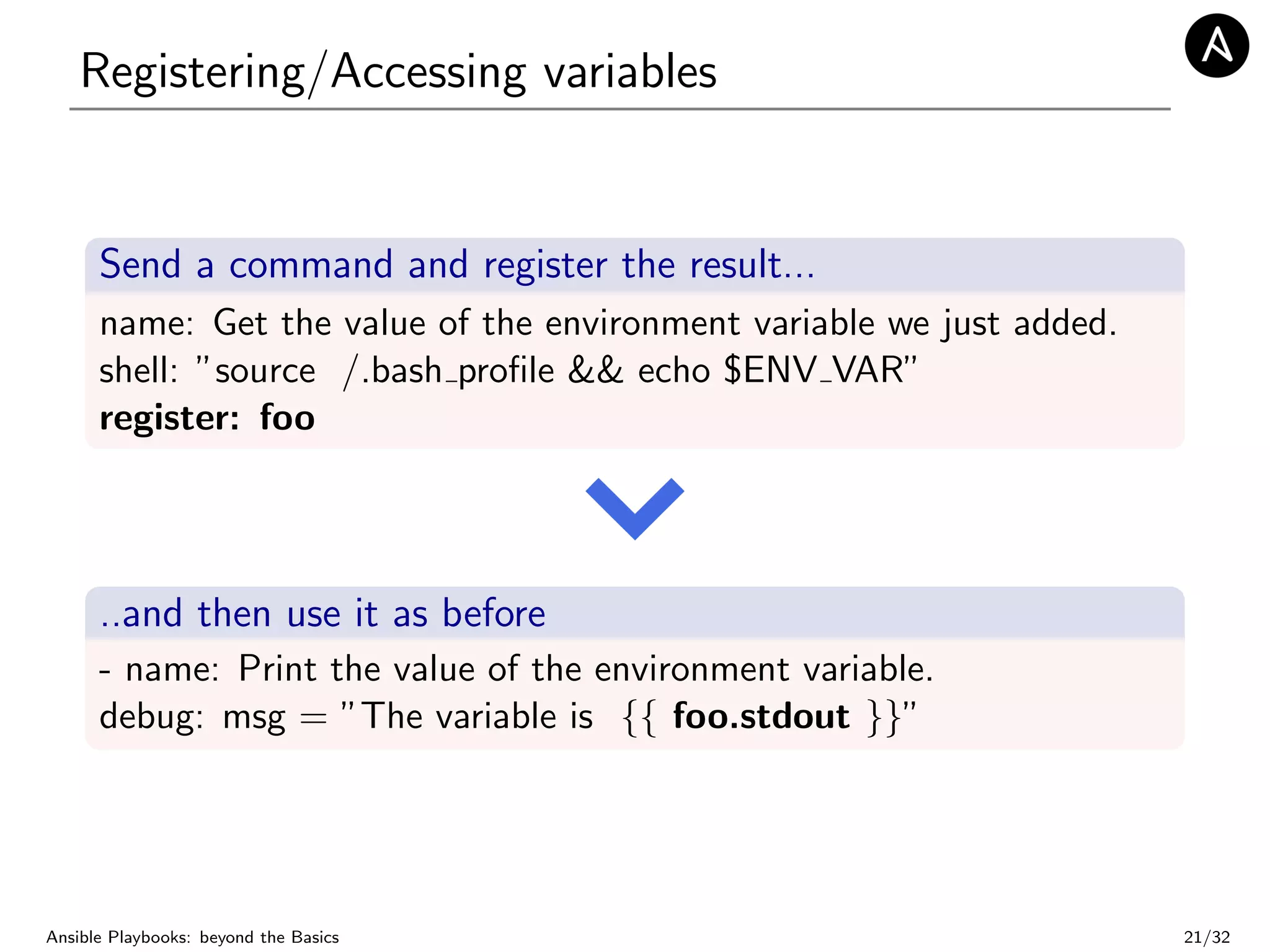
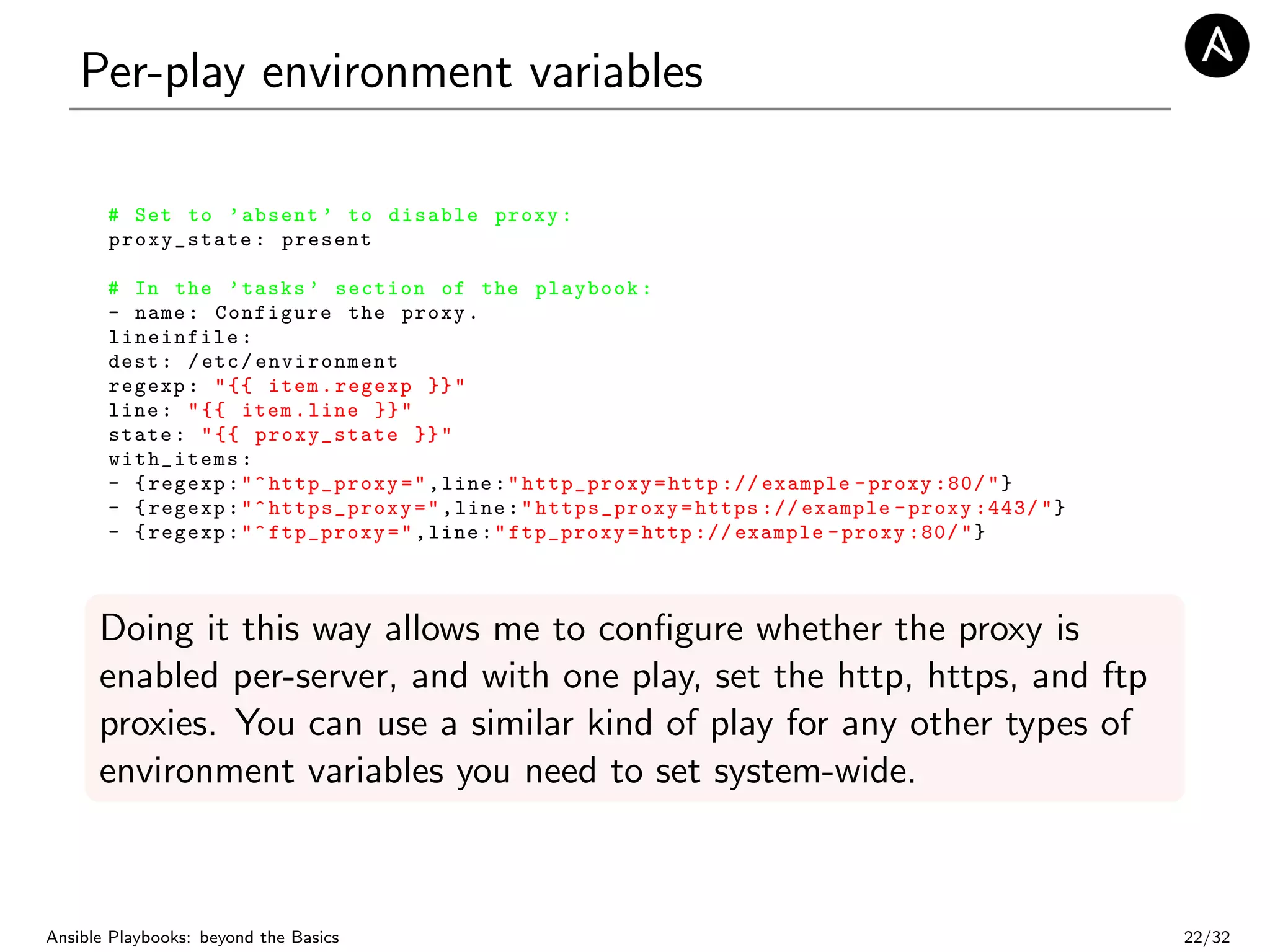

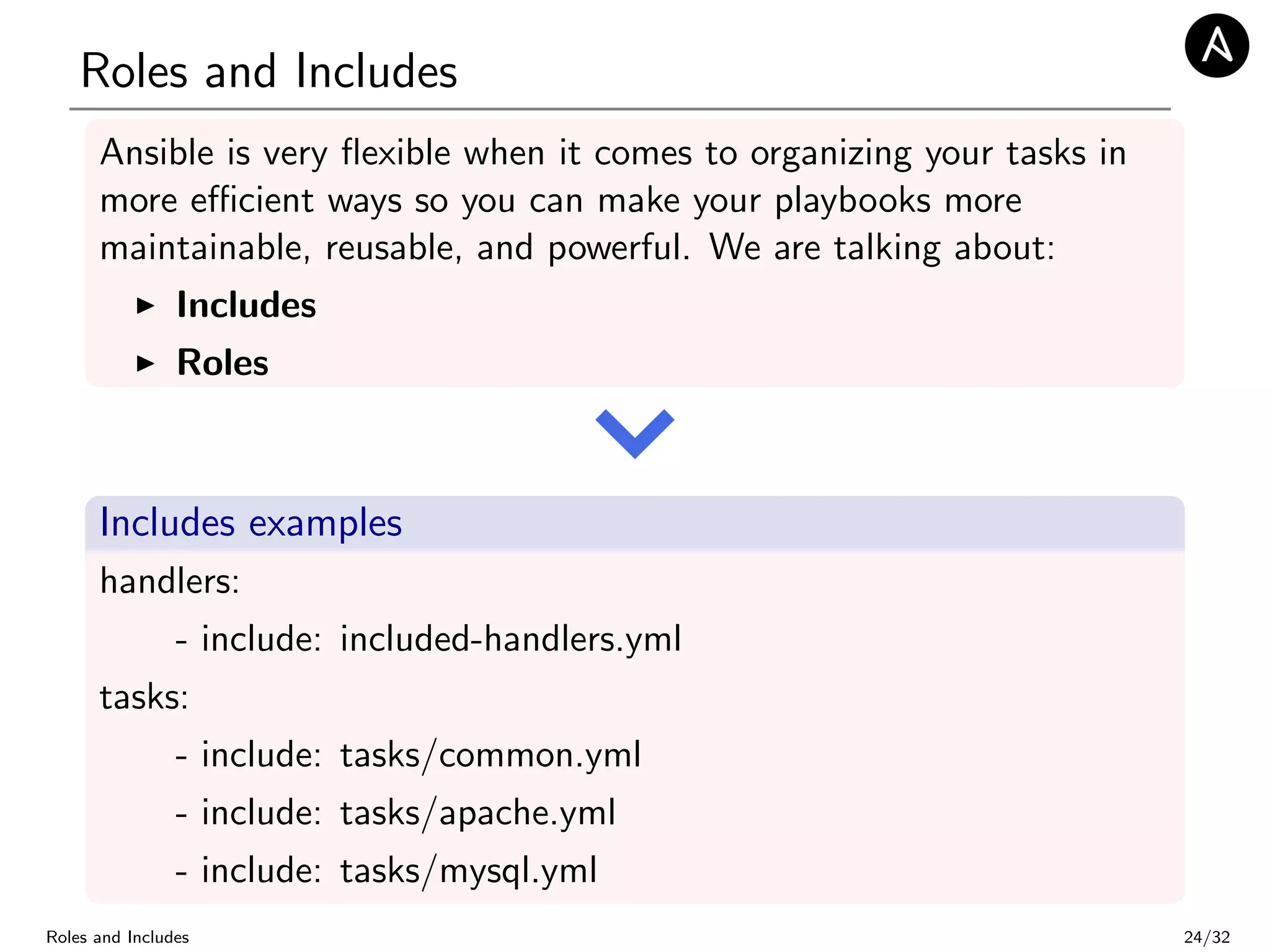
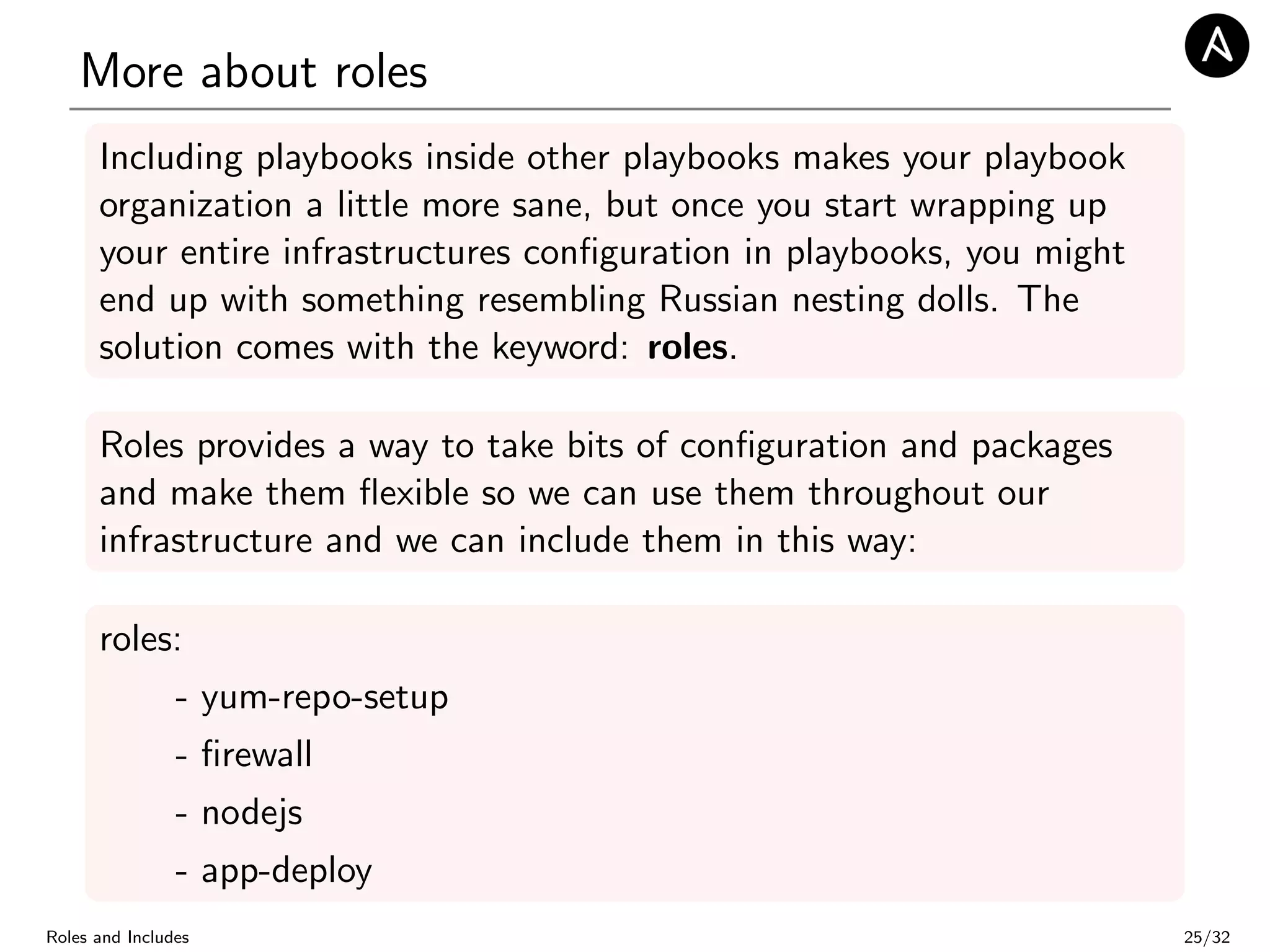
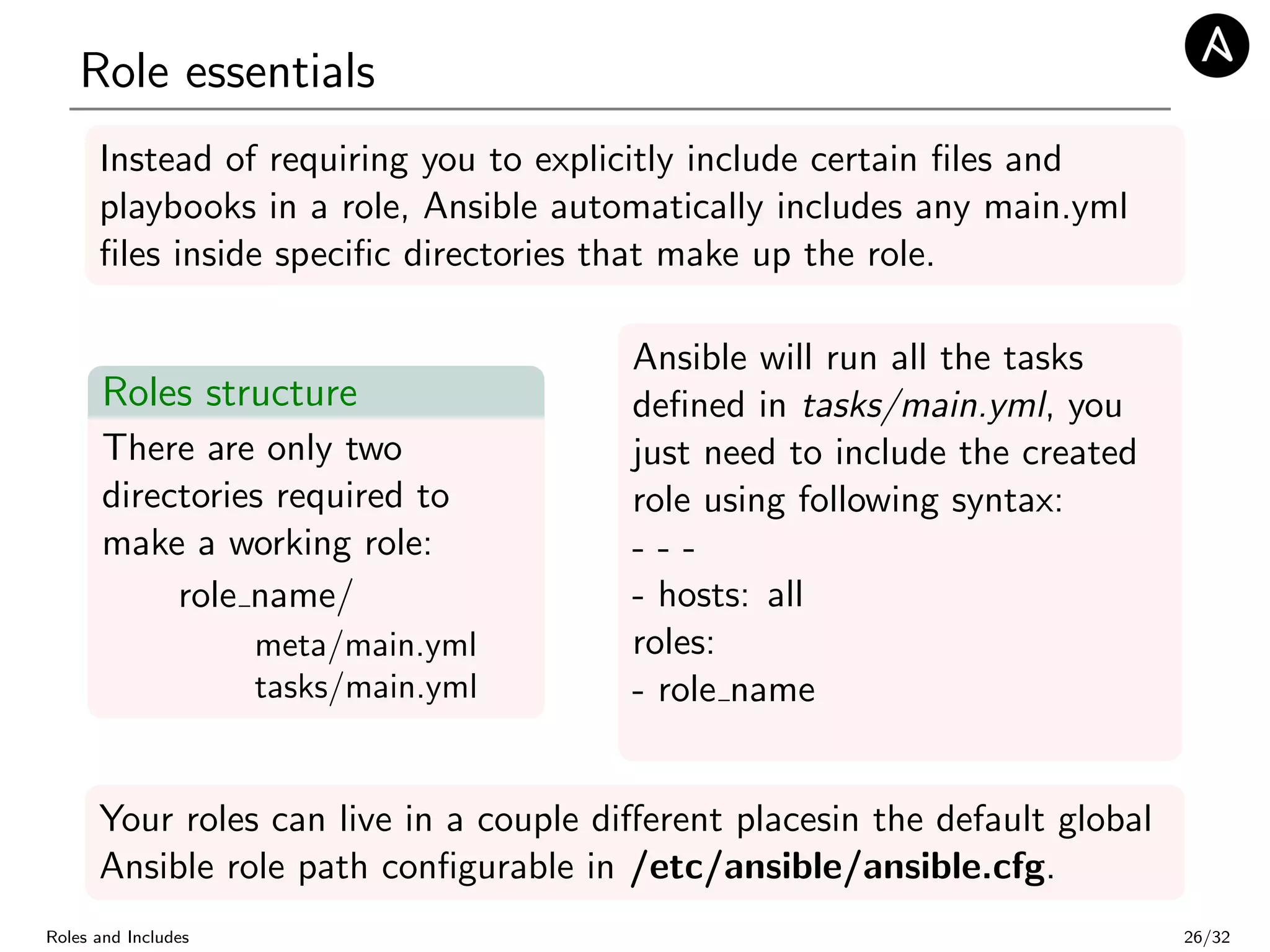
![Enter Ansible Galaxy: Be social
Wouldnt it be better if people could share roles for
commonly-installed applications and services?
Helpful Galaxy commands
Some other helpful ansible-galaxy commands you might use from
time to time:
ansible-galaxy list displays a list of installed roles, with
version numbers
ansible-galaxy remove [role] removes an installed role
ansible-galaxy init can be used to create a role template
suitable for submission to Ansible Galaxy
Roles and Includes 27/32](https://image.slidesharecdn.com/ansibleintro-160318134617/75/Introducing-Ansible-30-2048.jpg)
